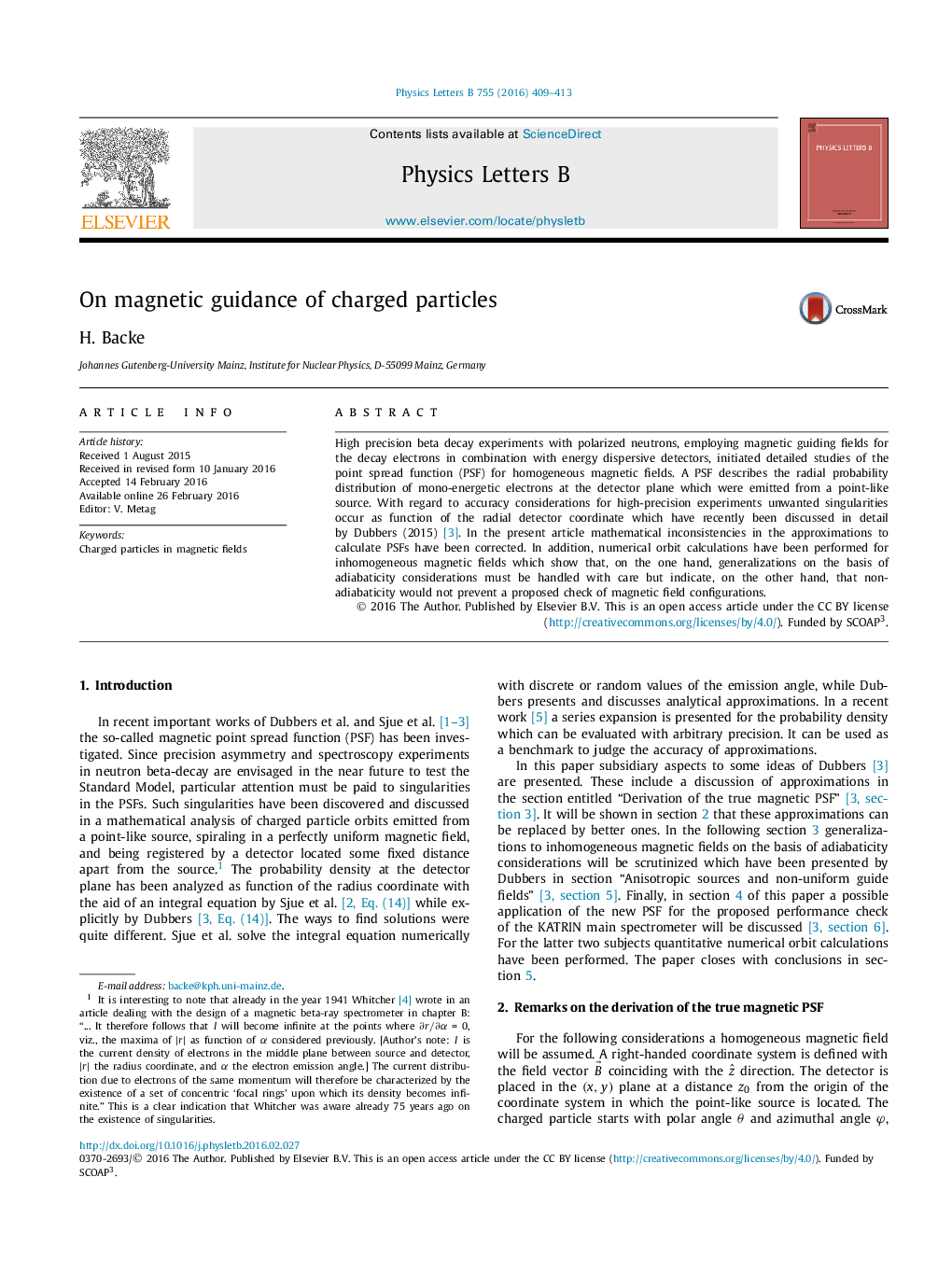| Article ID | Journal | Published Year | Pages | File Type |
|---|---|---|---|---|
| 1850279 | Physics Letters B | 2016 | 5 Pages |
Abstract
High precision beta decay experiments with polarized neutrons, employing magnetic guiding fields for the decay electrons in combination with energy dispersive detectors, initiated detailed studies of the point spread function (PSF) for homogeneous magnetic fields. A PSF describes the radial probability distribution of mono-energetic electrons at the detector plane which were emitted from a point-like source. With regard to accuracy considerations for high-precision experiments unwanted singularities occur as function of the radial detector coordinate which have recently been discussed in detail by Dubbers (2015) [3]. In the present article mathematical inconsistencies in the approximations to calculate PSFs have been corrected. In addition, numerical orbit calculations have been performed for inhomogeneous magnetic fields which show that, on the one hand, generalizations on the basis of adiabaticity considerations must be handled with care but indicate, on the other hand, that non-adiabaticity would not prevent a proposed check of magnetic field configurations.
Related Topics
Physical Sciences and Engineering
Physics and Astronomy
Nuclear and High Energy Physics
Authors
H. Backe,
